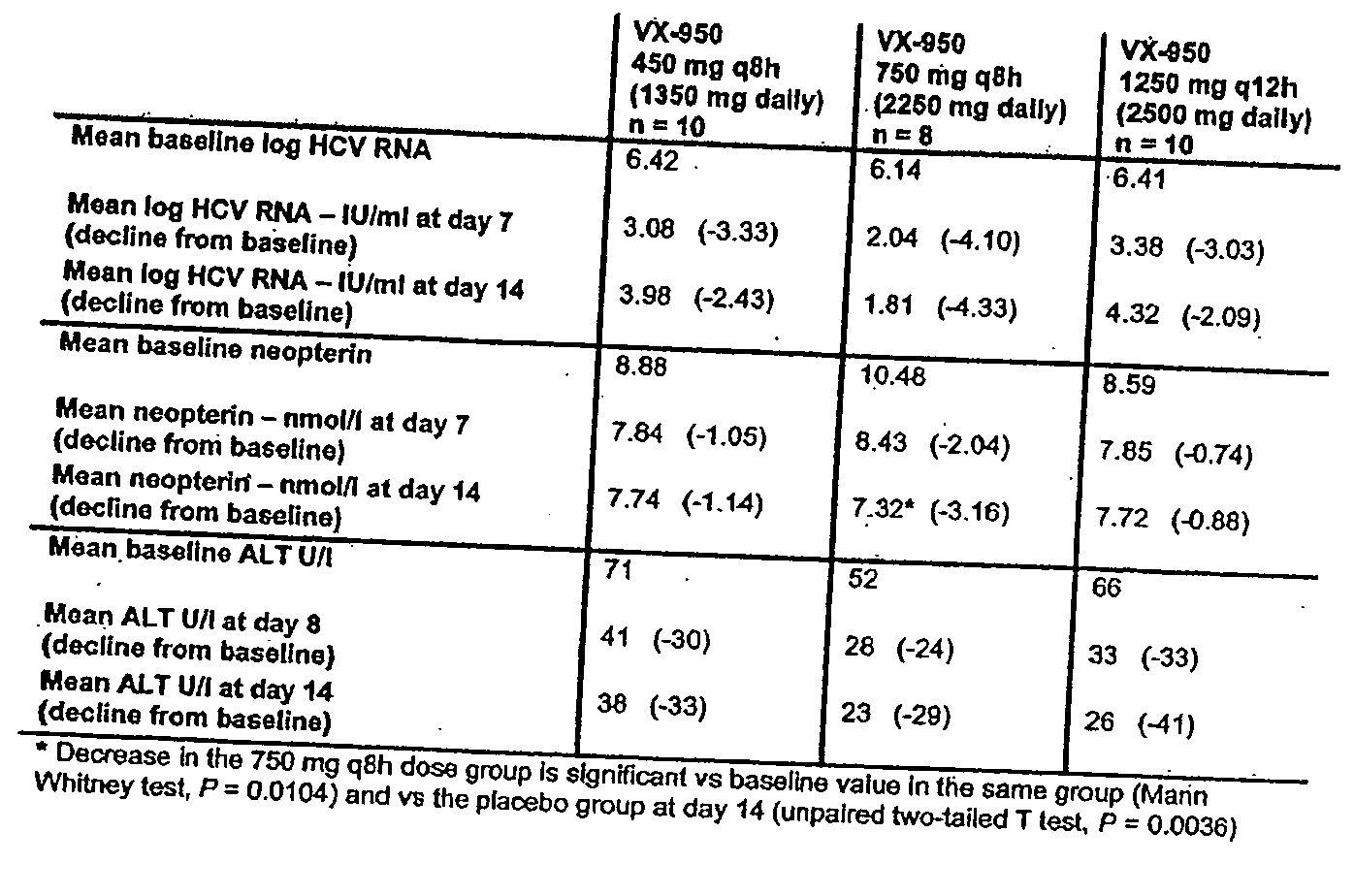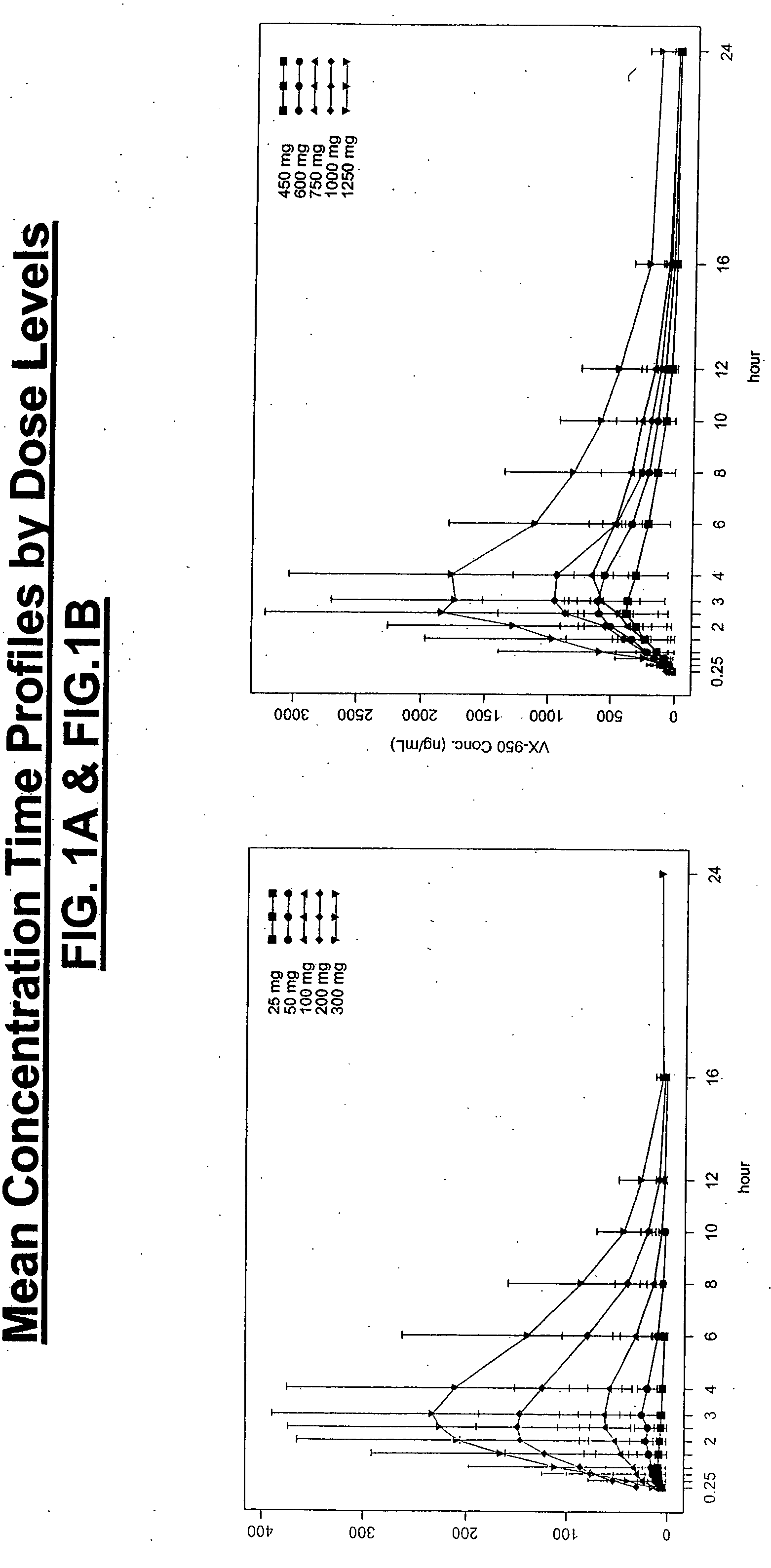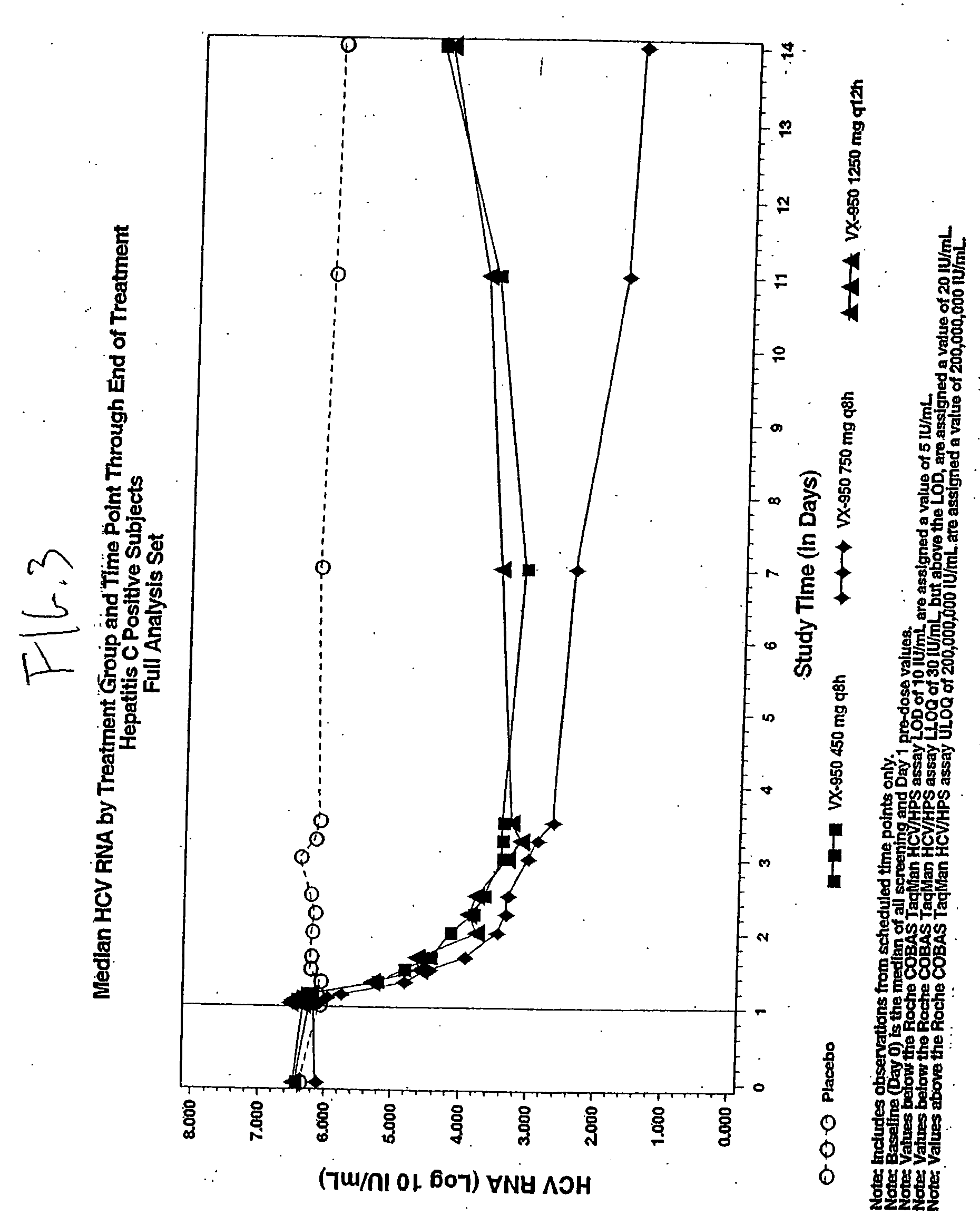Dose forms
a technology of hepatitis c virus and dose forms, which is applied in the direction of drug compositions, amide active ingredients, and metabolic disorders, etc., can solve the problems of insufficient anti-hcv agents or treatments, no broadly effective treatments for the debilitating progression of chronic hcv, and significant side effects of interferons
- Summary
- Abstract
- Description
- Claims
- Application Information
AI Technical Summary
Benefits of technology
Problems solved by technology
Method used
Image
Examples
example 1
HCV Replicon Cell Assay Protocol
[0143] Cells containing hepatitis C virus (HCV) replicon were maintained in DMEM containing 10% fetal bovine serum (FBS), 0.25 mg per ml of G418, with appropriate supplements (media A).
[0144] On day 1, replicon cell monolayer was treated with a trypsin:EDTA mixture, removed, and then media A was diluted into a final concentration of 100,000 cells per ml wit. 10,000 cells in 100 μl were plated into each well of a 96-well tissue culture plate, and cultured overnight in a tissue culture incubator at 37° C.
[0145] On day 2, compounds (in 100% DMSO) were serially diluted into DMEM containing 2% FBS, 0.5% DMSO, with appropriate supplements (media B). The final concentration of DMSO was maintained at 0.5% throughout the dilution series.
[0146] Media on the replicon cell monolayer was removed, and then media B containing various concentrations of compounds was added. Media B without any compound was added to other wells as no compound controls.
[0147] Cell...
example 2
HCV Ki Assay Protocol
[0151] HPLC Microbore Method for Separation of 5AB Substrate and Products
Substrate:
[0152] NH2-Glu-Asp-Val-Val-(alpha)Abu-Cys-Ser-Met-Ser-Tyr-COOH
[0153] A stock solution of 20 mM 5AB (or concentration of your choice) was made in DMSO w / 0.2M DTT. This was stored in aliquots at −20 C.
[0154] Buffer: 50 mM HEPES, pH 7.8; 20% glycerol; 100 mM NaCl
[0155] Total assay volume was 100 μL
X1 (μL)conc. in assayBuffer86.5See above5 mM KK4A0.525μM1 M DTT0.55mMDMSO or inhibitor2.52.5%v / v50 μM tNS30.0525nM250 μM 5AB (initiate)2025μM
[0156] The buffer, KK4A, DTT, and tNS3 were combined; distributed 78 μL each into wells of 96 well plate. This was incubated at 30 C for ˜5-10 min.
[0157] 2.5 μL of appropriate concentration of test compound was dissolved in DMSO (DMSO only for control) and added to each well. This was incubated at room temperature for 15 min.
[0158] Initiated reaction by addition of 20 μL of 250 μM 5AB substrate (25 μM concentration is equivalent or slightly...
example 3
[0175] VX-950 was examined in a randomized, double-blind, placebo-controlled single-dose escalation study. 25 healthy male volunteers were enrolled. Each subject received multiple single doses of VX-950 at least 7 days apart, 3 doses of VX-950 at increasing dose levels and 1 dose of placebo.
[0176] Doses of 25 mg to 1250 mg were evaluated. A dose escalation scheme was used that combined dose doubling and modified Fibonacci to be aggressive in the lower dose range and conservative in the higher dose range.
[0177] VX-950 was well tolerated at all dose levels and no serious adverse events were reported during the study. There did not appear to be an increase in adverse events with increasing dose levels.
[0178] A pharmacokinetics analysis was performed using the statistical moment approach. FIG. 1A and FIG. 1B illustrate the mean concentration-time profiles. The selected derived pharmacokinetic parameters are depicted in FIGS. 2A-2D. Pharmacokinetic analysis showed that VX-950 was abso...
PUM
| Property | Measurement | Unit |
|---|---|---|
| concentration | aaaaa | aaaaa |
| concentration | aaaaa | aaaaa |
| concentration | aaaaa | aaaaa |
Abstract
Description
Claims
Application Information
 Login to View More
Login to View More - R&D
- Intellectual Property
- Life Sciences
- Materials
- Tech Scout
- Unparalleled Data Quality
- Higher Quality Content
- 60% Fewer Hallucinations
Browse by: Latest US Patents, China's latest patents, Technical Efficacy Thesaurus, Application Domain, Technology Topic, Popular Technical Reports.
© 2025 PatSnap. All rights reserved.Legal|Privacy policy|Modern Slavery Act Transparency Statement|Sitemap|About US| Contact US: help@patsnap.com



